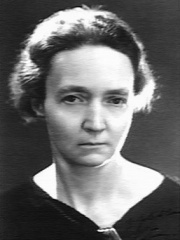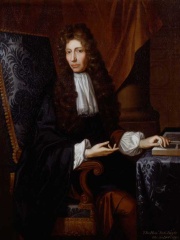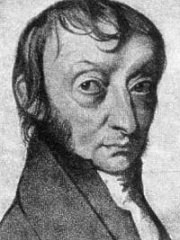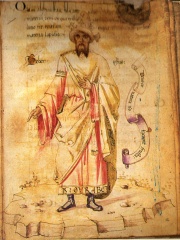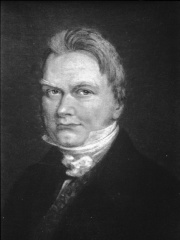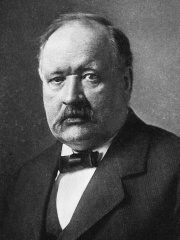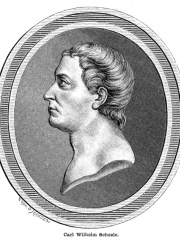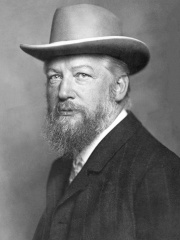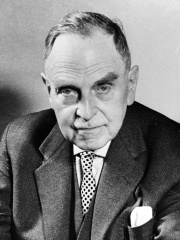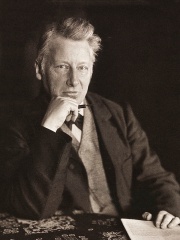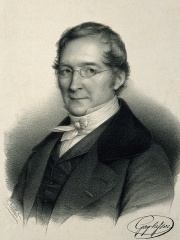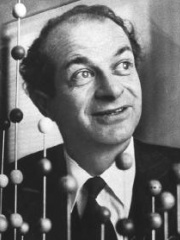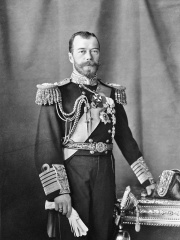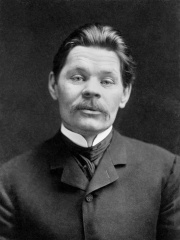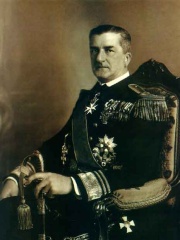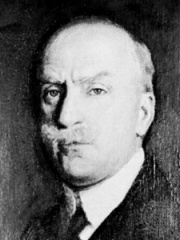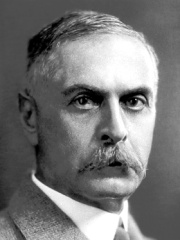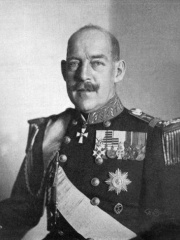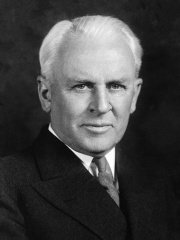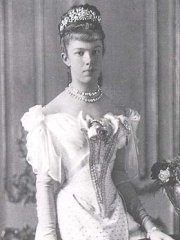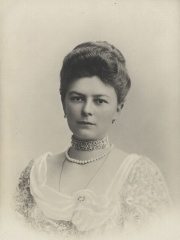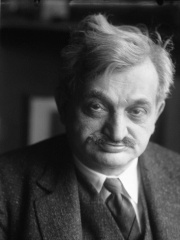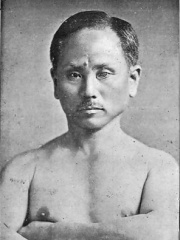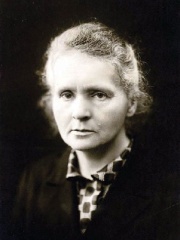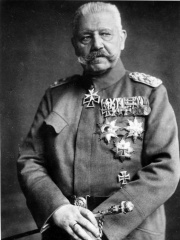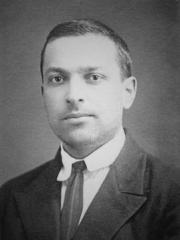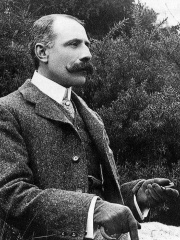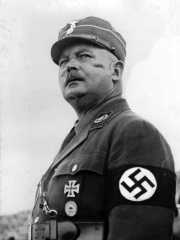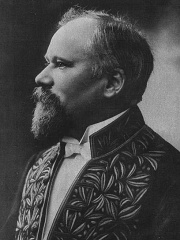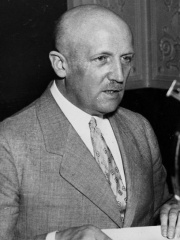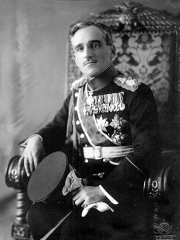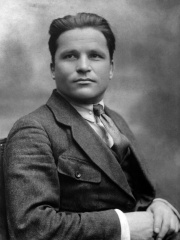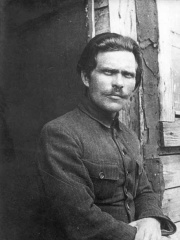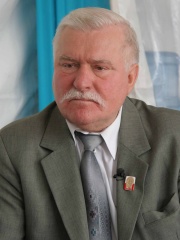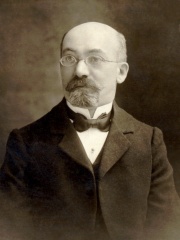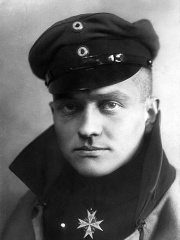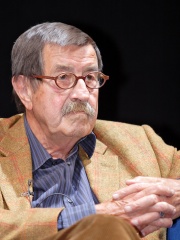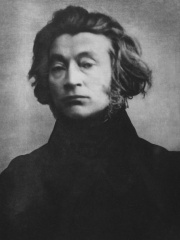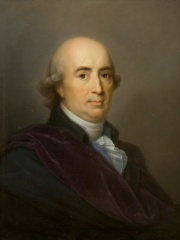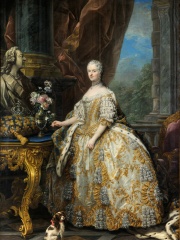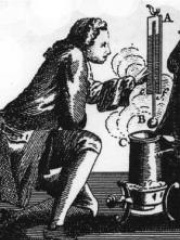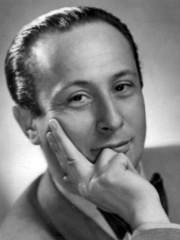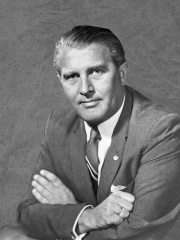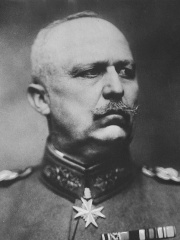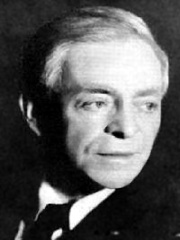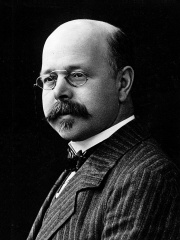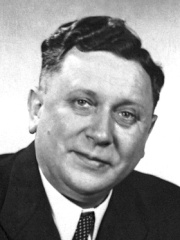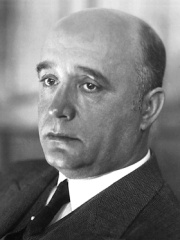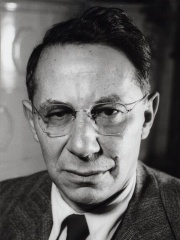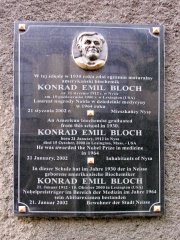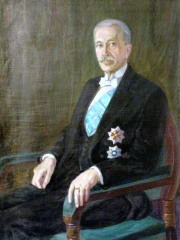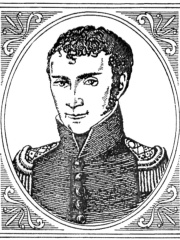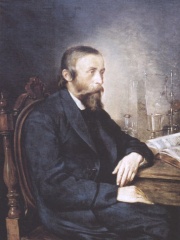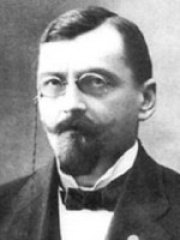CHEMIST
Fritz Haber
1868 - 1934
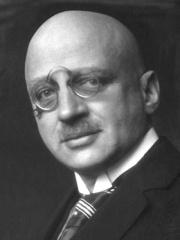
 Fritz Haber
Fritz Haber
Fritz Haber (German pronunciation: [ˈfʁɪt͡s ˈhaːbɐ] ; 9 December 1868 – 29 January 1934) was a German chemist who received the Nobel Prize in Chemistry in 1918 for his invention of the Haber–Bosch process, a method used in industry to synthesize ammonia from nitrogen gas and hydrogen gas. This invention is important for the large-scale synthesis of fertilizers and explosives. It is estimated that a third of annual global food production uses ammonia from the Haber–Bosch process, and that this supports nearly half the world's population. Read more on Wikipedia
Since 2007, the English Wikipedia page of Fritz Haber has received more than 3,345,426 page views. His biography is available in 83 different languages on Wikipedia (up from 80 in 2019). Fritz Haber is the 12th most popular chemist, the 15th most popular biography from Poland (down from 12th in 2019) and the most popular Polish Chemist.
Fritz Haber is most famous for inventing a process to synthesize ammonia from nitrogen and hydrogen. This process was important because it allowed the production of fertilizer for food production.
Memorability Metrics
3.3M
Page Views (PV)
74.67
Historical Popularity Index (HPI)
83
Languages Editions (L)
9.35
Effective Languages (L*)
4.19
Coefficient of Variation (CV)
Page views of Fritz Habers by language
Over the past year Fritz Haber has had the most page views in the English wikipedia edition with 504,545 views, followed by German (120,312), and Japanese (80,011). In terms of yearly growth of page views the top 3 wikpedia editions are Hakka (244.79%), Malagasy (157.27%), and Sundanese (85.55%)
Among CHEMISTS
Among chemists, Fritz Haber ranks 12 out of 602. Before him are Irène Joliot-Curie, Robert Boyle, Amedeo Avogadro, Jabir ibn Hayyan, Jöns Jacob Berzelius, and Svante Arrhenius. After him are Carl Wilhelm Scheele, Wilhelm Ostwald, Otto Hahn, Jacobus Henricus van 't Hoff, Joseph Louis Gay-Lussac, and Linus Pauling.
Most Popular Chemists in Wikipedia
Go to all RankingsIrène Joliot-Curie
1897 - 1956
HPI: 77.35
Rank: 6
Robert Boyle
1627 - 1691
HPI: 76.92
Rank: 7
Amedeo Avogadro
1776 - 1856
HPI: 76.78
Rank: 8
Jabir ibn Hayyan
721 - 815
HPI: 76.24
Rank: 9
Jöns Jacob Berzelius
1779 - 1848
HPI: 75.70
Rank: 10
Svante Arrhenius
1859 - 1927
HPI: 74.82
Rank: 11
Fritz Haber
1868 - 1934
HPI: 74.67
Rank: 12
Carl Wilhelm Scheele
1742 - 1786
HPI: 74.25
Rank: 13
Wilhelm Ostwald
1853 - 1932
HPI: 73.85
Rank: 14
Otto Hahn
1879 - 1968
HPI: 73.37
Rank: 15
Jacobus Henricus van 't Hoff
1852 - 1911
HPI: 72.85
Rank: 16
Joseph Louis Gay-Lussac
1778 - 1850
HPI: 72.83
Rank: 17
Linus Pauling
1901 - 1994
HPI: 72.50
Rank: 18
Contemporaries
Among people born in 1868, Fritz Haber ranks 3. Before him are Nicholas II of Russia, and Maxim Gorky. After him are Miklós Horthy, Abdulmejid II, Karl Landsteiner, Constantine I of Greece, Robert Andrews Millikan, Archduchess Marie Valerie of Austria, Sophie, Duchess of Hohenberg, Emanuel Lasker, and Gichin Funakoshi. Among people deceased in 1934, Fritz Haber ranks 4. Before him are Marie Curie, Paul von Hindenburg, and Lev Vygotsky. After him are Edward Elgar, Ernst Röhm, Albert I of Belgium, Raymond Poincaré, Kurt von Schleicher, Alexander I of Yugoslavia, Sergey Kirov, and Nestor Makhno.
Others Born in 1868
Go to all RankingsNicholas II of Russia
POLITICIAN
1868 - 1918
HPI: 82.35
Rank: 1
Maxim Gorky
WRITER
1868 - 1936
HPI: 78.47
Rank: 2
Fritz Haber
CHEMIST
1868 - 1934
HPI: 74.67
Rank: 3
Miklós Horthy
POLITICIAN
1868 - 1957
HPI: 74.51
Rank: 4
Abdulmejid II
POLITICIAN
1868 - 1944
HPI: 72.84
Rank: 5
Karl Landsteiner
BIOLOGIST
1868 - 1943
HPI: 72.29
Rank: 6
Constantine I of Greece
POLITICIAN
1868 - 1923
HPI: 71.63
Rank: 7
Robert Andrews Millikan
PHYSICIST
1868 - 1953
HPI: 71.34
Rank: 8
Archduchess Marie Valerie of Austria
POLITICIAN
1868 - 1924
HPI: 70.57
Rank: 9
Sophie, Duchess of Hohenberg
COMPANION
1868 - 1914
HPI: 69.71
Rank: 10
Emanuel Lasker
CHESS PLAYER
1868 - 1941
HPI: 69.60
Rank: 11
Gichin Funakoshi
MARTIAL ARTS
1868 - 1957
HPI: 69.12
Rank: 12
Others Deceased in 1934
Go to all RankingsMarie Curie
PHYSICIST
1867 - 1934
HPI: 85.49
Rank: 1
Paul von Hindenburg
POLITICIAN
1847 - 1934
HPI: 78.33
Rank: 2
Lev Vygotsky
PSYCHOLOGIST
1896 - 1934
HPI: 76.62
Rank: 3
Fritz Haber
CHEMIST
1868 - 1934
HPI: 74.67
Rank: 4
Edward Elgar
COMPOSER
1857 - 1934
HPI: 74.47
Rank: 5
Ernst Röhm
MILITARY PERSONNEL
1887 - 1934
HPI: 73.13
Rank: 6
Albert I of Belgium
POLITICIAN
1875 - 1934
HPI: 71.97
Rank: 7
Raymond Poincaré
POLITICIAN
1860 - 1934
HPI: 70.80
Rank: 8
Kurt von Schleicher
POLITICIAN
1882 - 1934
HPI: 70.35
Rank: 9
Alexander I of Yugoslavia
POLITICIAN
1888 - 1934
HPI: 69.89
Rank: 10
Sergey Kirov
POLITICIAN
1886 - 1934
HPI: 69.67
Rank: 11
Nestor Makhno
MILITARY PERSONNEL
1888 - 1934
HPI: 69.07
Rank: 12
In Poland
Among people born in Poland, Fritz Haber ranks 15 out of 1,694. Before him are Lech Wałęsa (1943), Paul von Hindenburg (1847), L. L. Zamenhof (1859), Manfred von Richthofen (1892), Günter Grass (1927), and Adam Mickiewicz (1798). After him are Johann Gottfried Herder (1744), Marie Leszczyńska (1703), Daniel Gabriel Fahrenheit (1686), Władysław Szpilman (1911), Wernher von Braun (1912), and Erich Ludendorff (1865).
Others born in Poland
Go to all RankingsLech Wałęsa
POLITICIAN
1943 - Present
HPI: 78.65
Rank: 9
Paul von Hindenburg
POLITICIAN
1847 - 1934
HPI: 78.33
Rank: 10
L. L. Zamenhof
PHYSICIAN
1859 - 1917
HPI: 76.86
Rank: 11
Manfred von Richthofen
MILITARY PERSONNEL
1892 - 1918
HPI: 76.45
Rank: 12
Günter Grass
WRITER
1927 - 2015
HPI: 75.19
Rank: 13
Adam Mickiewicz
WRITER
1798 - 1855
HPI: 75.16
Rank: 14
Fritz Haber
CHEMIST
1868 - 1934
HPI: 74.67
Rank: 15
Johann Gottfried Herder
PHILOSOPHER
1744 - 1803
HPI: 74.49
Rank: 16
Marie Leszczyńska
COMPANION
1703 - 1768
HPI: 74.37
Rank: 17
Daniel Gabriel Fahrenheit
PHYSICIST
1686 - 1736
HPI: 74.07
Rank: 18
Władysław Szpilman
MUSICIAN
1911 - 2000
HPI: 73.76
Rank: 19
Wernher von Braun
ENGINEER
1912 - 1977
HPI: 73.69
Rank: 20
Erich Ludendorff
MILITARY PERSONNEL
1865 - 1937
HPI: 73.40
Rank: 21
Among CHEMISTS In Poland
Among chemists born in Poland, Fritz Haber ranks 1. After him are Casimir Funk (1884), Walther Nernst (1864), Kurt Alder (1902), Friedrich Bergius (1884), Tadeusz Reichstein (1897), Konrad Emil Bloch (1912), Clara Immerwahr (1870), Ignacy Mościcki (1867), Johann Wilhelm Ritter (1776), Ignacy Łukasiewicz (1822), and Antoni Grabowski (1857).
Fritz Haber
1868 - 1934
HPI: 74.67
Rank: 1
Casimir Funk
1884 - 1967
HPI: 70.80
Rank: 2
Walther Nernst
1864 - 1941
HPI: 69.19
Rank: 3
Kurt Alder
1902 - 1958
HPI: 68.26
Rank: 4
Friedrich Bergius
1884 - 1949
HPI: 67.89
Rank: 5
Tadeusz Reichstein
1897 - 1996
HPI: 67.01
Rank: 6
Konrad Emil Bloch
1912 - 2000
HPI: 64.86
Rank: 7
Clara Immerwahr
1870 - 1915
HPI: 64.14
Rank: 8
Ignacy Mościcki
1867 - 1946
HPI: 64.01
Rank: 9
Johann Wilhelm Ritter
1776 - 1810
HPI: 62.42
Rank: 10
Ignacy Łukasiewicz
1822 - 1882
HPI: 61.08
Rank: 11
Antoni Grabowski
1857 - 1921
HPI: 60.72
Rank: 12
